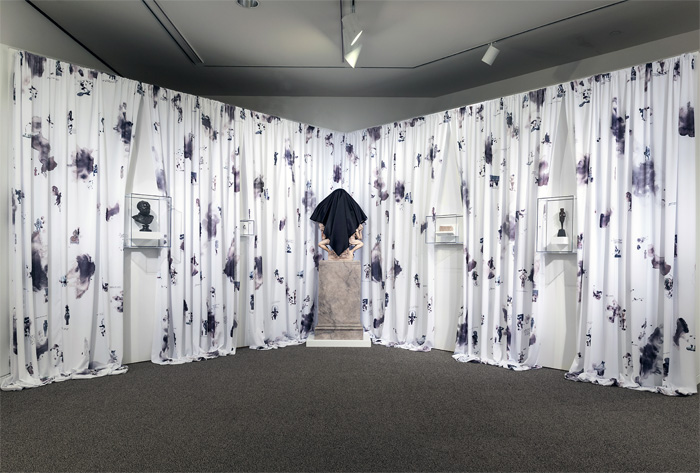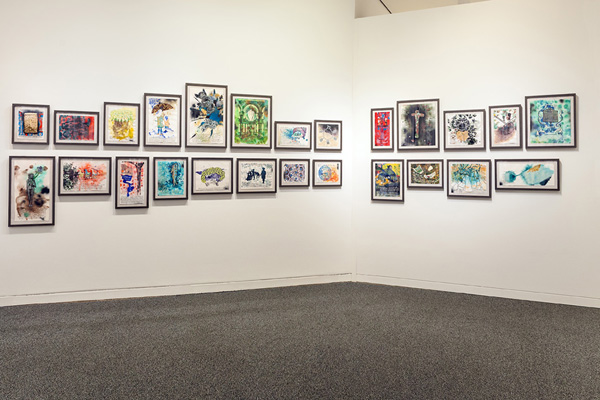 Precarious Prototypes on view at the Walters Art Museum in Baltimore, Maryland, June – August 2014.
Precarious Prototypes on view at the Walters Art Museum in Baltimore, Maryland, June – August 2014.
At the core of my work are critical explorations of labor and class in visual culture. I draw heavily upon the historical decorative arts to find contradictions within the contexts they originated. In my work, objects such as wallpaper patterns, ceramics, and paintings do not simply reflect the mood of a given culture but are also tools for critique.
Alongside painting and mixed-media installations, I use domestic materials in my research on the construction of political identityThese ubiquitous yet formative objects are of great interest to me—particularly repetitive decorative patterns. In these patterns, I alter and manipulate both the images they depict and the notions of authoritative taste they promote.
My installation here is composed of two related bodies of work: Decorum, an ongoing series of paintings that attempt to trace global histories of enslaved peoples from antiquity to the present, and Precarious Prototypes, a textile installation that responds to and transforms selected objects from the Walters Art Museum’s collection. In this installation of Decorum, the museum becomes a venue for an open-ended but limited investigation of slavery. In considering the relationship between ornament and oppression, my inquiry comprises appropriation and historic archival research. In Precarious Prototypes, the museum’s own collection has been used to focus on the mannered representation of enslaved peoples and other figures-in-service throughout the history of art and to consider its place in museums and popular culture.
I began this project (Precarious Prototypes) in search of objects in The Walters Museum collection that depicted enslaved peoples. Expanding my inquiry into the museum as labor archive, Precarious Prototypes ultimately explores the mannered representations of servitude and objectification within the museum’s collection. Select objects are exhibited as well as printed, to understand and unsettle the role of the museum as master narrator. And so, the drapery both reveals and conceals, becoming an index of unstable contradictions. Specifically, I am looking at how depictions of the body as subservient, contorted, dehumanized, grotesque and lacking agency, unravel how art history becomes art as history.
 Above, installation view of Decorum
Above, installation view of Decorum
Decorum is an incomplete but growing index of the histories of enslaved people as evinced in historical records. Allusions to slavery in the paintings are juxtaposed with decorative and textual sources in order to trace the complex structures that surround labor and power inequalities. Decorum considers the problems of sufficiently representing the legacy of slavery. Archival remnants of slave narratives, ornament, and my own personal inquiries constitute an open-ended process of asking how might the decorative arts participate, either actively or silently, in promoting or reflecting dominant ideologies of social hierarchy, political authority, and cultural fantasy.
Part of the Sondheim Prize Exhibition at the Walters Art Museum, juried by Claire Gilman, Sarah Oppenheimer and Olivia Shao.
Fore more information, visit The Walters website.
Press reviews: The Baltimore City Paper The Baltimore Sun BmoreArt Art Fag City
]]>